'A Revolutionary, Life-Changing Experience': Conservative Christian Lesbians Are Coming Out Later in Life
When raised in compulsive heterosexuality and patriarchy, how do lesbians unravel who they are?
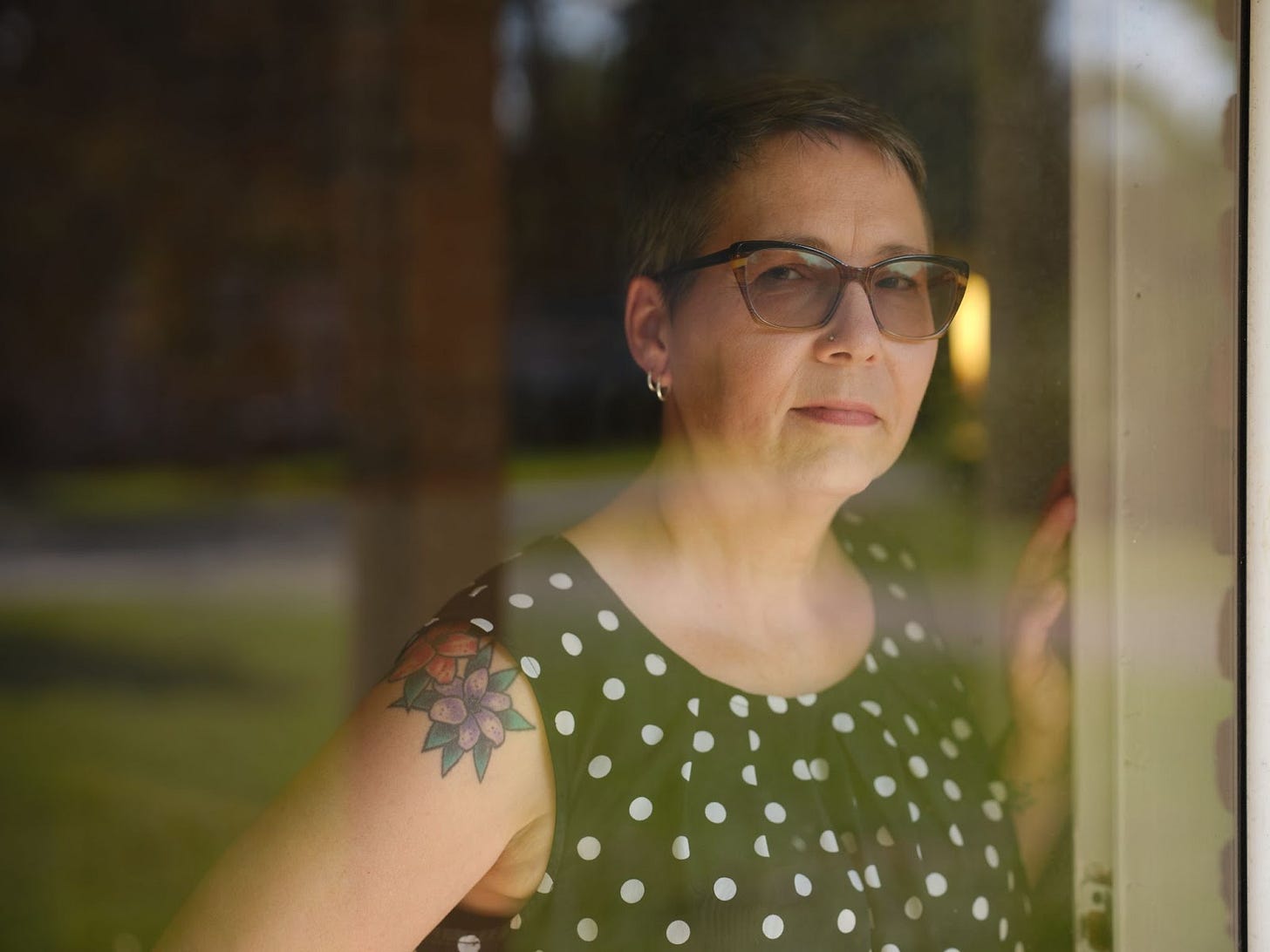
This story was reported in partnership with The 19th, a nonprofit newsroom reporting on gender, politics and policy.
Editor’s note: This article includes mention of suicide. If you are having thoughts of suicide or are concerned that someone you know may be, resources are available here.
Angela Thompson soaked in the garden tub of her new apartment in Columbia, South Carolina. With a freshly cut bob and a lease penned in her name, she reflected on the 30-year marriage she had just left behind. “I put down a deposit, I got the utilities and I furnished the [apartment] off Facebook Marketplace,” she told Uncloseted Media and The 19th.
At just 18 years old, Thompson married a youth pastor six years her senior due to pressure from a non-denominational evangelical church she described as “close to a cult.”
“The message from my church was: ‘You find a man, you marry a man, you have his babies, you stay married forever, whether you’re happy or not,’” she says. “Look around and pick a man,” they would tell her.
During Thompson’s marriage, however, something felt terribly wrong, and she turned into a shell of herself. She says she shut down, stopped trying to communicate her needs, put her head down and kept going.
For the next 30 years, she’d raise four kids and continue to be involved in her church. But at age 48, Thompson realized something earth-shattering: She was a lesbian.
“I started researching the [LGBTQ] community for my child who came out to me,” she says. “That’s when I found my people. I found people like me. And I didn’t know what that meant.”
After questioning for a few years, Thompson slowly started to come out. “When I told my [ex-] sister-in-law I was gay, she said, ‘That makes sense. I’ve noticed on social media over the last couple of weeks that you look happy. You look like a full person,’” she says.
“And she was right.”
While Thompson, now 55 and married to a woman, felt isolated in her feelings of shame and confusion for decades, she’s far from alone.
Across the United States, a growing number of women raised in conservative Christian environments are coming out as lesbians later in life—often after decades of heterosexual marriage, child-rearing and religious devotion. Experts say this late realization is rooted in what’s known as compulsory heterosexuality: a cultural and religious pressure that makes straightness feel not just normal, but mandatory. For women shaped by strict gender roles and purity culture, recognizing attraction to other women can be delayed by years.
A study from 2013 found that lesbians are more likely than gay men to discover their identity later in life, with 14% of lesbians first thinking they might not be straight when they were age 20 or above, compared to only 3% of gay men. And a 2019 report found that the average age for women entering a same-sex marriage is significantly higher than for women entering different-sex marriages.
“Women are born into a world built on compulsory heterosexuality and patriarchy,” says Anne-Marie Zanzal, a coach for later-in-life lesbians and queer women divorcing men. “So we bury any longing for women so deeply that we forget it was ever ours to claim.”
But Zanzal says that now more than ever, the world is seeing stories of conservative Christian women coming out in midlife.
“There is greater visibility, more expansive language and safer community spaces—both online and in real life,” she says. “This loosens the grip of old scripts like compulsory heterosexuality and the good daughter, wife and mom.”
She says that as stigma lowers and support rises, women in their 30s all the way to their 60s can reexamine long-held assumptions and choose truth over performance. “It’s less a trend of new lesbians and more a cultural shift that makes long-quiet truths speakable, livable, and worth honoring.”
Gender Roles and Compulsive Heterosexuality
Therapists and researchers say many women—especially those raised in conservative Christian environments—have long felt pressure to pursue heterosexual relationships because anything else seemed unthinkable. The concept of compulsory heterosexuality, coined by the late feminist Adrienne Rich, argues that heterosexuality is not a natural state but an institution, like the patriarchy, that organizes and controls. It sets the norm, making other sexualities seem like deviations.
“It’s like a checklist,” says Emily Bettdur, a coach for later-in-life lesbians. “Find a man, get married, have kids—that’s what’s supposed to make you happy. But many women do all that and still feel something is off.”
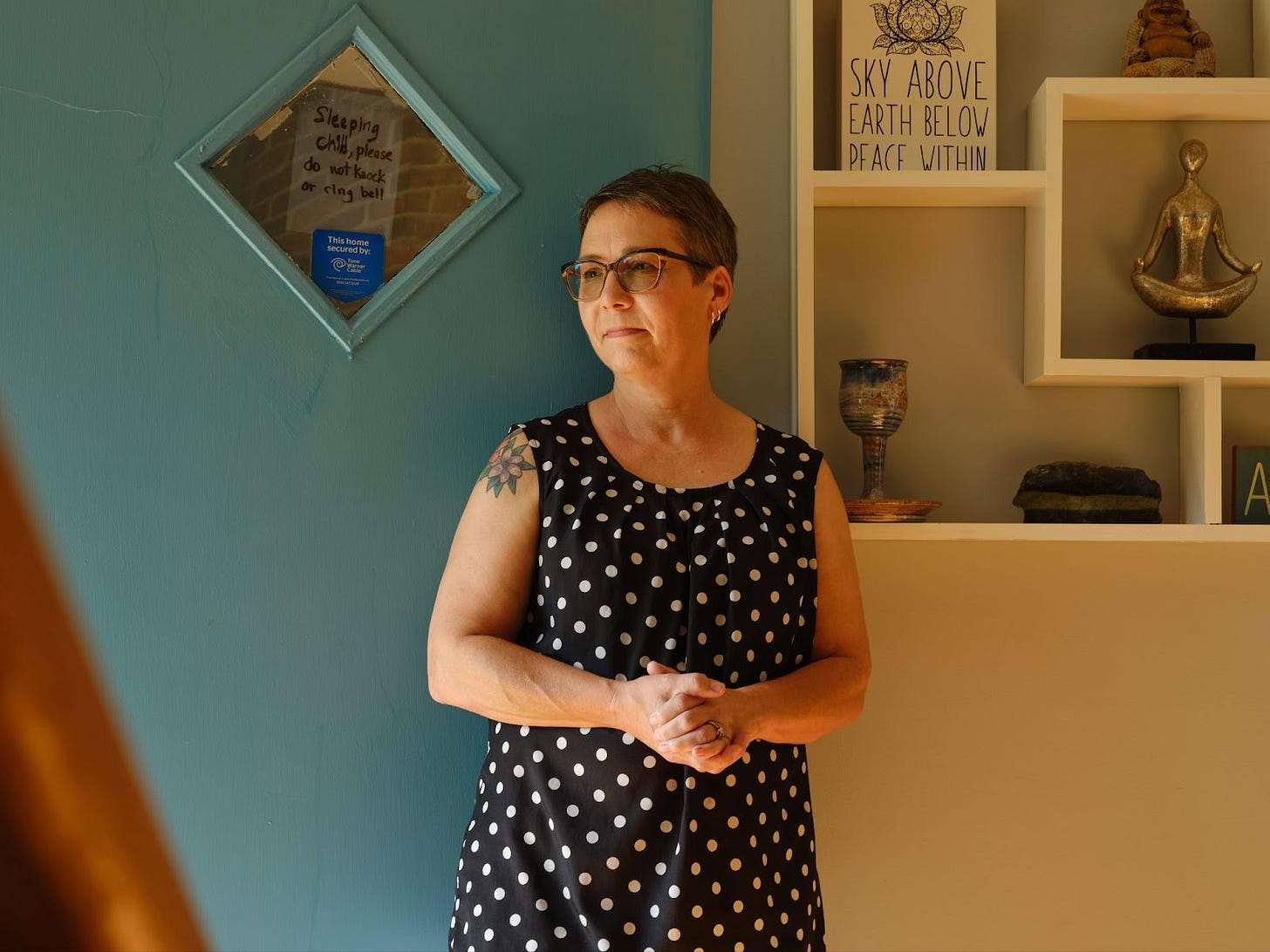
For Thompson, the pressure to conform to heterosexuality was intensified by rigid gender roles enforced in church and at home. As a kid, she was expected to have long hair, to cook and to wash the dishes. She wasn’t allowed to do yardwork with her brothers, and couldn’t buy pants if they were too baggy or had too many pockets.
Having grown up in the 1980s, during the height of the AIDS epidemic, Thompson says her religious community linked being gay with having a disease. “[It] was in the category of being a thief or a drug addict using needles,” she says. “Bad, sinful people we don’t associate with.”
Thompson remembers having a sleepover and kissing a girl when she was 12 years old. Her parents walked in and she was subsequently banned from sleepovers with that friend. “We were told, ‘Don’t do that.’”
In the church, Thompson says even though she was the caretaker, she was taught to defer to her husband for parenting decisions like sleep training and letting her kids “cry it out.” She was taught to apologize, keep things bottled in, and not ask for support from her husband. It was also normal for her not to have financial independence.
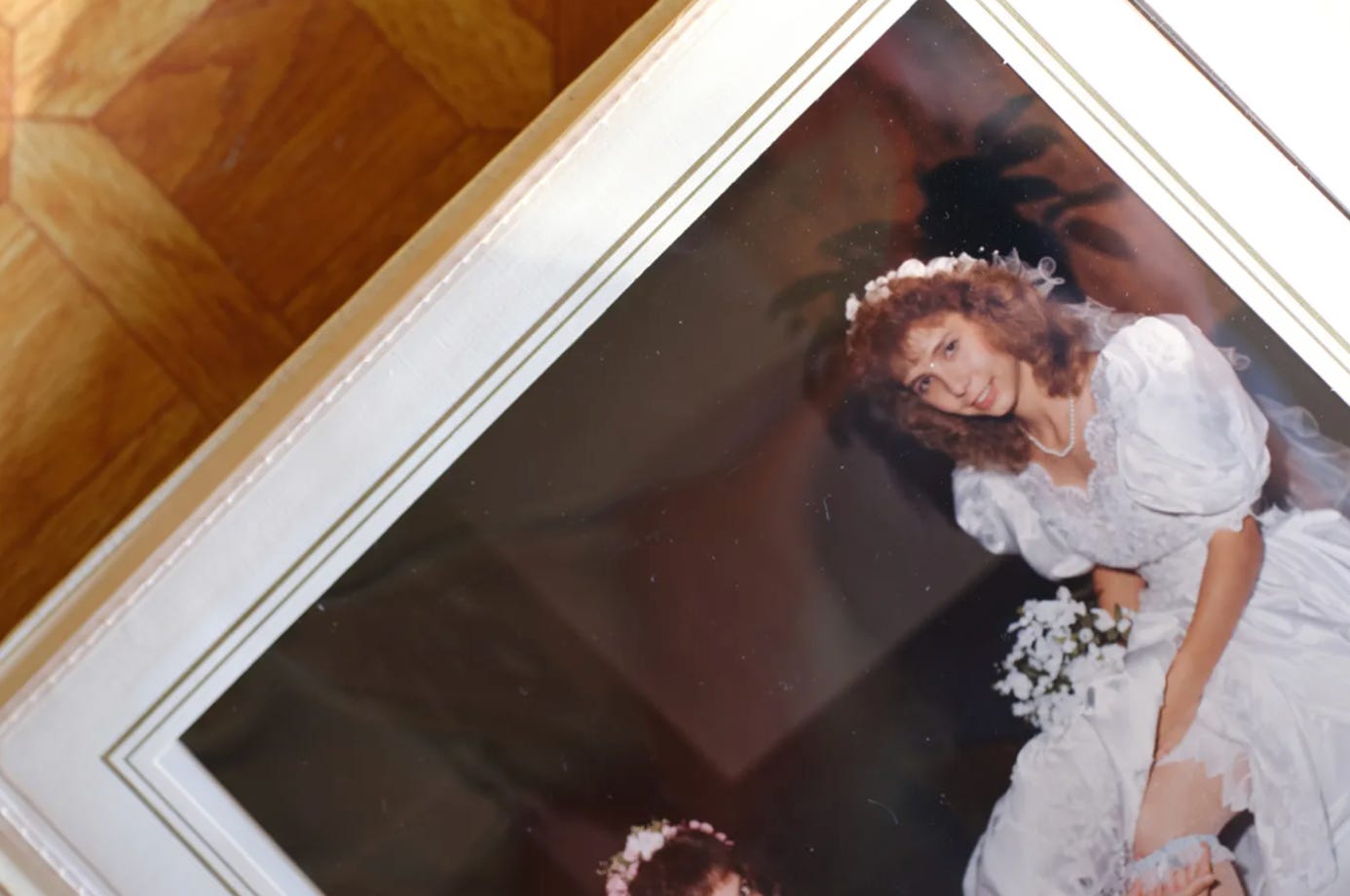
“I was somewhere a half-step above the children. There is a literal teaching that your husband is above you and you must obey him,” she says.
Uncloseted Media reached out to Thompson’s old church for comment and they did not respond.
Zanzal says that what is particularly toxic for conservative Christian women is the fear linked with making decisions for themselves, because independence is often associated with wrongdoing.
“When you’re deconstructing faith, you first have to deconstruct what it means to be a woman and what these conservative traditions have taught you,” says Zanzal. “They’re told that they’re second. They are told that they are less than. They’re told that their needs come last.”
For many women, the pressure to conform buries their sense of self.
“Christianity is often taught as a form of control,” says Traci West, a Christian ethics scholar at Drew University Theological School. “It’s so important to recognize that shame is a tool of repression used by the church. And it works to the advantage of those who are considered the superior ones, often heterosexual men. Shame seeps into your identity and your sense of worthlessness. And the only way to regain that worth when you feel shamed often is to be obedient.”
The same is true for Brook, a 48-year-old woman from rural Arkansas who came out two years ago. When she hears the word “lesbian,” she still feels a tightness in her chest.
“There’s this anxious feeling. Like, ‘Stay away from that,’” she told Uncloseted Media and The 19th.
Brook’s earliest memory of the word lesbian came when she was in 6th grade. Kids at school called her a lesbian, and she didn’t know what it meant, so she asked her mom.
“She didn’t tell me what it meant, just that it was bad, like a curse word.”
Brook, who asked to use only her first name because she isn’t out to her immediate family, was raised in a Southern Baptist church. She was married to a man for 10 years before she began questioning her sexuality.
“I thought I was doing something wrong the whole time I was married,” she says. “I was so unhappy. The messaging was all about purity, being sinless, untouched, a gift to your husband. That’s what we were taught a proper woman should be. How to sit, act, move, dress.”
Brook says that her marriage was sexless and lacked intimacy. “But I couldn’t leave. … I made that vow in the sight of God in my community that I would be married [until] death do us part,” she says. “The church infused in me that divorce is not an option. You dig your heels in and you push through. There were a lot of really unhappy married people that I was around that just dealt with it.”
According to online resources for late-blooming lesbians, many women who aren’t experiencing intimacy with men wonder if they are asexual because they are not attracted to their husbands.
Thompson thought she was asexual for years. “I [thought I didn’t] like sex at all, because literally the only form of sex that’s acceptable in that evangelical church movement is male and female, when you are married to each other,” she says.
She remembers a friend bringing up to her that she might be gay. “I was like, ‘What do you mean? No, I think I’m asexual. I honestly don’t care if I ever have sex again. That man can leave me alone. I’m tired.’”
It wasn’t until early 2018—six months after that first conversation—that her friend gently raised the question again: “Have you considered that you might be gay?” This time, Thompson didn’t dismiss it outright.
Recovering from Shame
One 2016 study found that internalized heterosexism—when a queer person believes that their identity is a bad thing for going against the heterosexual norm—is directly associated with chronic physical health conditions and depression. According to a 2014 article, later-in-life lesbians face the triple threat of shame from sexism, homophobia and ageism.
That shame and fear is what kept Addy Sakler, who realized she was a lesbian when she was a teenager, in the closet until she was 36. Sakler grew up in a conservative Protestant community in Ohio and spent decades internalizing the belief that “God hated gay people” and that she was broken and in need of healing.
“I was walking around like a zombie, dead inside and depressed and having suicidal ideation,” she told Uncloseted Media and The 19th. “I was cutting myself, hitting myself and desperate.”
Sakler says she was “white knuckling it” trying to avoid her attraction to women.
“I would sit at night and just read the bible and pray to Jesus. And then I put myself in conversion therapy.”
Sakler was in and out of conversion therapy for 30 years trying to cure herself, denying she was a lesbian to her religious community and living “a double life.”
Zanzal says that for lesbians from a religious setting, the stakes of leaving are terrifying. “They lose so much community … and they get a lot of shaming for not staying married and for being queer.”
While Sakler eventually found acceptance at a progressive church that allowed her to explore her lesbian identity without shame and has been married to her wife for three years now, she still gets triggered by her conservative upbringing.
“I drive by an evangelical church, and it’s a trauma response. I get a pit in my stomach,” she says. “Love was always so conditional. … I sacrificed myself for love and for community. Finally, I couldn’t do it anymore. It was killing me inside. I was like a shrinking violet. … And underneath the shame, there’s so much anger at the people who inflicted this.”
Moving Forward
While experts say that there is an increase in acceptance and visibility, some fear the current social climate will quell that.
“We are currently seeing an extremely dangerous regression rooted in misogyny, homophobia, and transphobia that will have severely negative implications for future generations,” says Mallory Hanfling, a psychotherapist and researcher studying the experience of later-in-life lesbians coming out. “We’re seeing anti-abortion campaigns … book banning and censorship of LGBTQ education, and normalization of sexual assault and abuse specifically towards girls and women.”
She says that she can no longer clearly see the light at the end of that tunnel as the world feels less safe for queer folks day by day.
“I expect that if we, as a country, continue in the direction we are headed, folks will understandably choose safety and self-preservation over living authentically.”
With that in mind, she emphasizes that finding community is crucial for overcoming these hurdles.
Sakler, Thompson and Brook have all left the church entirely. It wasn’t until they found acceptance in a new environment that they felt they had the space to come out.
“Once I felt safe in my new community, I came out and it was like this weight just lifted immediately off my shoulders,” Sakler says. “I have healthy self-attachment with [my wife]. As I’ve grown older, I’ve gotten more wisdom and a lot of therapy and more self-acceptance and self-love. That’s been a revolutionary, life-changing experience.”
Brook is still in the process of understanding her identity and said acceptance from her family would have helped. “I really wish my mom hadn’t made it seem like [lesbians] were something shameful. If she’d just said, ‘That’s a human being who’s worthy of love, no matter who they love,’ that kind of acceptance would’ve meant everything.”
For Thompson, it was when she started working at a new job where she had other queer women as colleagues that she realized there was a life beyond heterosexuality.
“As I came out to the inner circle of moms in our homeschool co-op, I was pleasantly surprised,” she says. “So many of them said, ‘Well, I’m bisexual, I just happen to be married to a man.’ I had no idea. But as I opened up to them one-on-one, they felt safe to share that too.”
The intimacy and safety felt radical in contrast to the culture she came from. On her first date with her wife, she felt “safe enough to fall asleep with her head on her shoulder,” something she had never done in her 30-year marriage with her ex-husband.
“There’s so much talking. I feel treated with such respect and equality. So much listening. We are always validating each other’s feelings and ideas. That was amazing to me,” she says. “Because in the world I came from, children were mostly seen and not heard and women were in the same category. I didn’t know that kind of intimacy was even possible. I didn’t know what real love and real safety felt like before I met my wife.”
Additional reporting by Sophie Holland
If objective, nonpartisan, rigorous, LGBTQ-focused journalism is important to you, please consider making a tax-deductible donation through our fiscal sponsor, Resource Impact, by clicking this button:




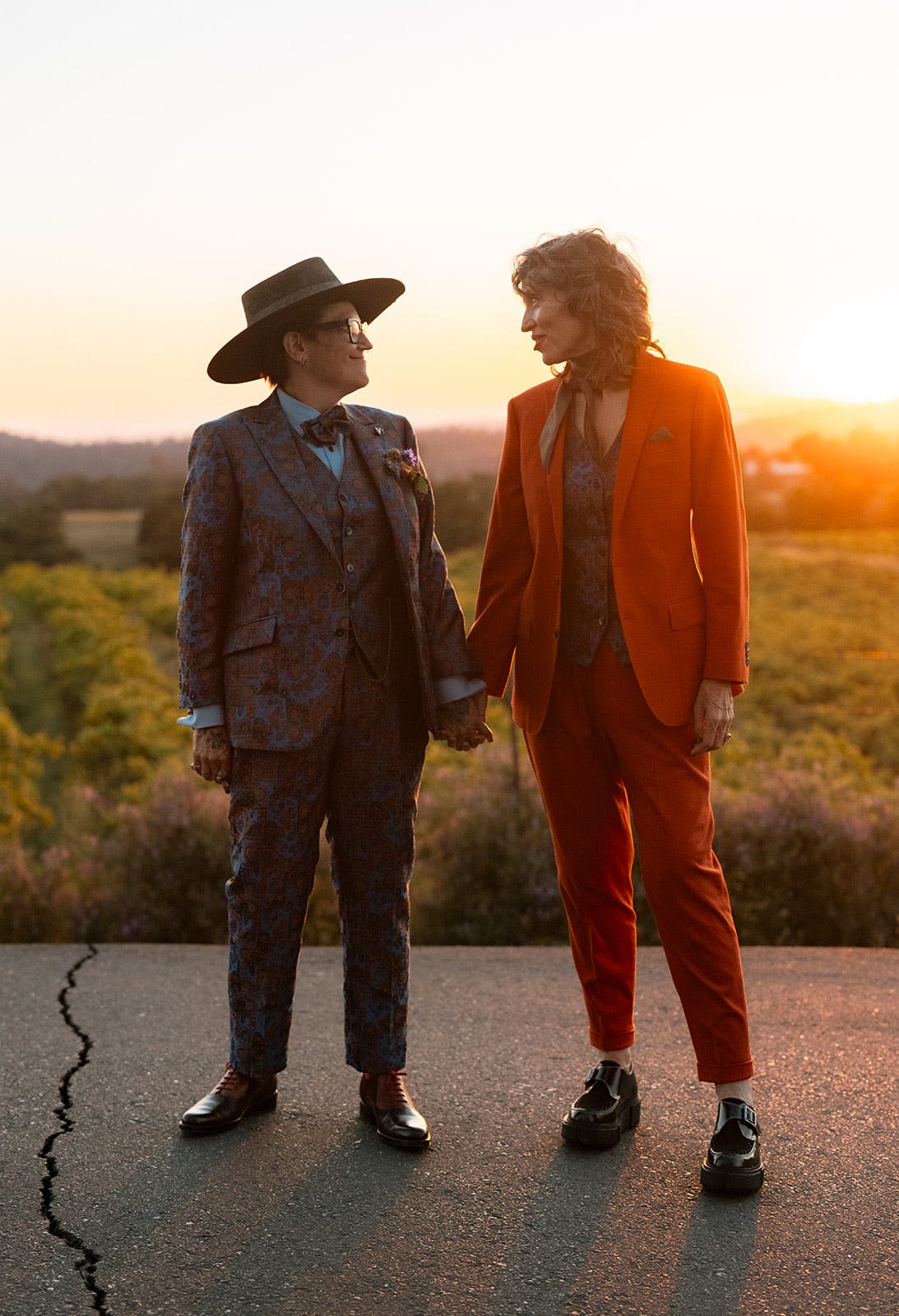
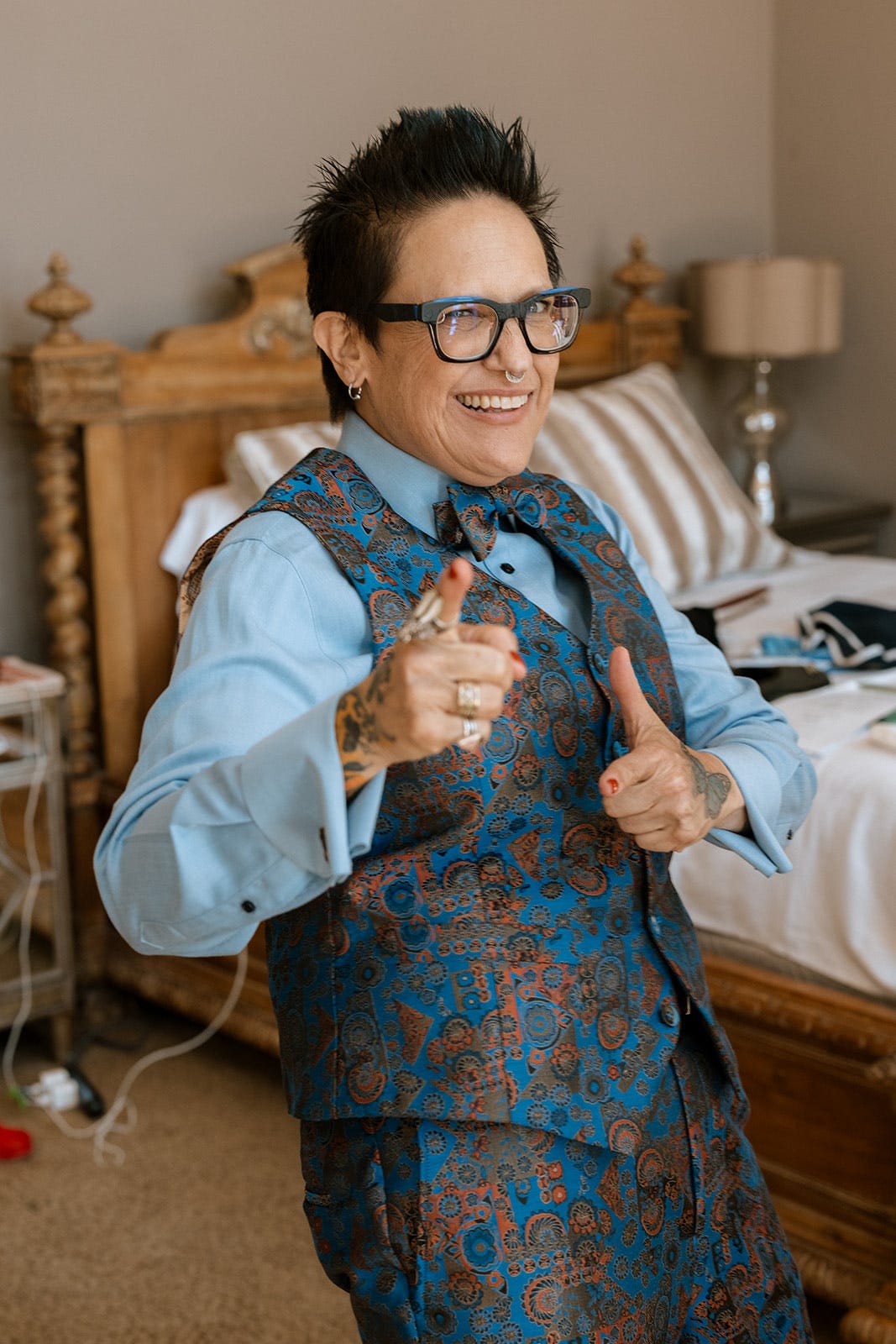

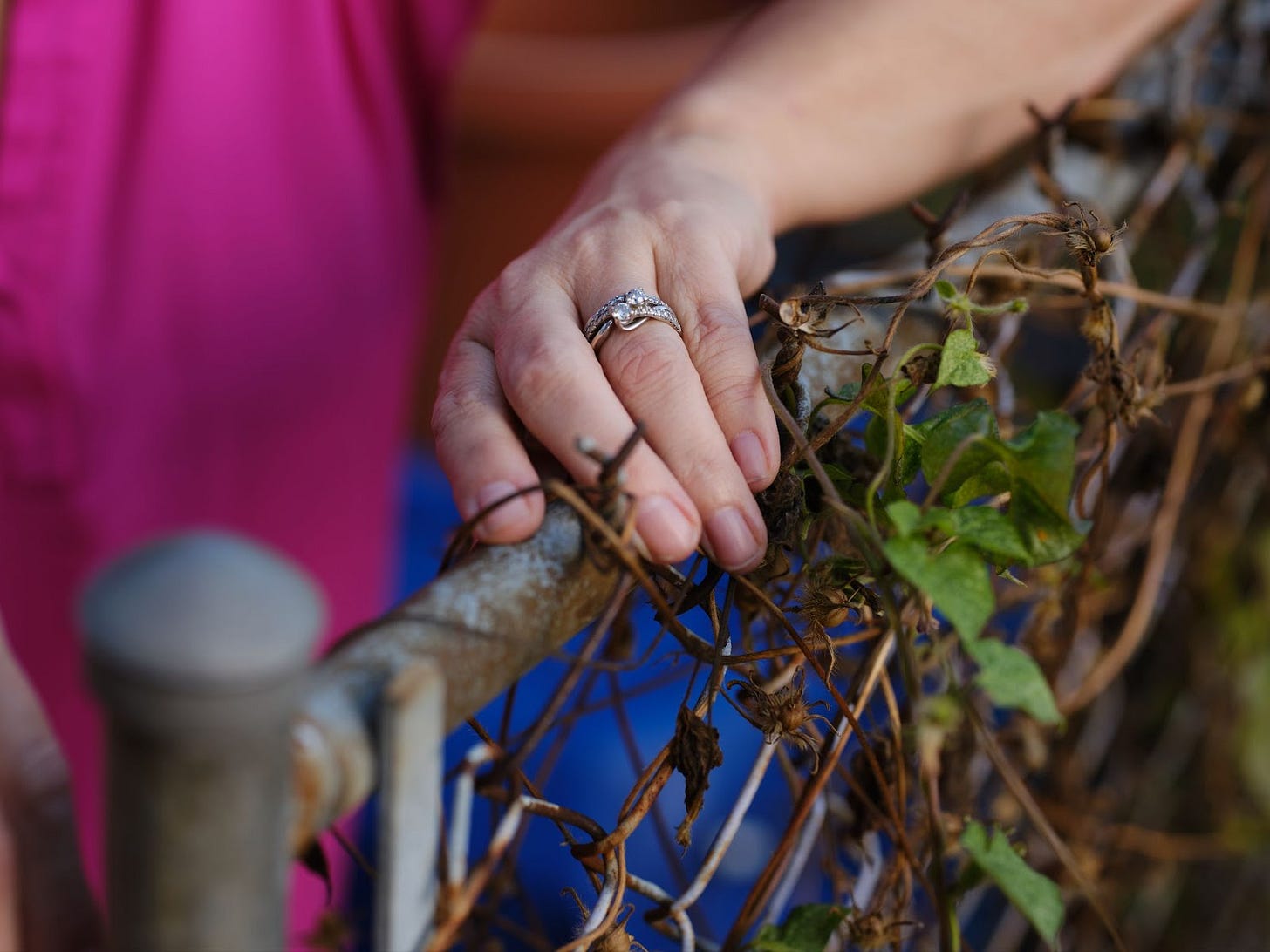

Heartbreaking... I want to give them all a hug. I had it mild in comparison and still it did enough damage. I can't imagine how imprisoned they must have felt. I discovered who I am at 40 - so I can relate a bit.
But being married to a man ... *shudders*
I cried while reading this incredible piece. I feel like part of my story has been told as a lesbian who came out very late in life. From the depths of my soul, I thank you 🥹💕